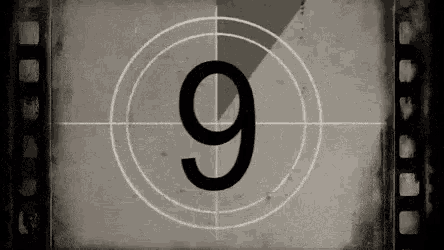Disney lost $200 million on Mars. That means we have a new all-time box office bomb, film fans: "John Carter," the movie that a dozen studios kicked around for more than 20 years in so-called “development hell” before Disne
 y decided to produce and release the expensive sci-fi extravaganza.
y decided to produce and release the expensive sci-fi extravaganza.Director John McTiernan (Die Hard) was once scheduled to direct, with Tom Cruise starring in the title role. Director Jon Favreau (Iron Man) tried for years to get the picture off the ground, but no one could agree on a script or budget.
Disney finally rolled the dice...and threw snake eyes. John Carter has been in theaters less than a month, but Disney is apparently giving up on the film and admits laying an egg.
There are flops, and then there are failures so profound they can affect an entire industry. With losses that Disney expects will exceed $200 million, John Carter now surpasses last year's Mars Needs Moms (down the hole for $136 million) and The Adventures of Pluto Nash, another sci-fi flop that held the record as the cinema's worst money loser for nearly a decade. Despite (perhaps because of?) Eddie Murphy's star presence, Pluto Nash lost a comparatively frugal $110 million following a 2002 release to a meager audience consisting mostly of crickets. Mars Needs Moms tanked so badly that it essentially shut down ImageMovers Digital, the special motion-capture animation studio created by Robert Zemeckis (Forrest Gump). All projects that were in development at ImageMovers have since been dropped, including a remake of the Beatles' Yellow Submarine, so a studio's failure perhaps in this instance is a good thing.
Unless home-media sales and rentals set an unprecedented record and give John Carter a boost, the picture is on target to become the reigning worst box-office flop of all time, not adjusting for inflation and other myriad factors in Hollywood's bag of tricky accounting techniques. In terms of plot, the special effects-laden picture compares in almost all respects to James Cameron’s Avatar, minus the financial success.
MSN’s Parallel Universe reports.
Budgeted at $250 million, John Carter has made less than $180 million worldwide since the film’s March 9 release less than two weeks ago. Disney is already calling it a bomb, a stink bomb of monumental proportions – since it appears the cost of marketing and promoting the film amounts to as much as $130 million on top of production costs. Essentially, the $250 million budget plus $130 million to schill the picture results in a negative cost of $380 million. With revenues of $180 million, John Carter is still down $200 million. Only miraculous DVD sales, rentals and pay-per-views could erase that many barrels of red ink.
Created by Edgar Rice Burroughs a century ago as a series of pulp adventure novels, John Carter follows the story of a Civil War veteran transplanted to a futuristic civilization on Mars, where he joins a rebellion to quash the forces of an evil empire, shoot space ships out of the sky, save the princess, etc. Sound familiar? George Lucas played around with the basic elements and struck gold with Star Wars, which is an amalgam of Burroughs, old Akira Kurosawa films (especially The Hidden Fortress) and mystical mumbo-jumbo that attracted New Age ding-dongs like fruit flies to overripe bananas.
Burroughs enjoyed greater success with his Tarzan novels, for which he is perhaps best remembered.
The disaster of the John Carter film can be traced to the age of Burrough's books and the easy observation that a studio waited too long to film this material. So influential were the original John Carter stories that virtually every science fiction movie director has pillaged and pilfered from them. By the time John Carter finally arrived in theaters, audiences had already seen close variations of virtually everything in the film, often many years ago, by way of Star Wars, Avatar, Star Trek -- even the big action sequences are reminiscent of the spectacular battles in the Lord of the Rings films.
Worse, early trailers for the film showed hardly a glimpse of action or wondrous special effects, elements crucial to whipping up audience interest in a would-be blockbuster.
Not even a Pixar pedigree could save the film. John Carter was directed by Andrew Stanton, an acknowledged fan of the Burroughs books, who wrote Pixar's massive hits Finding Nemo and WALL-E. John Carter is Stanton's first live-action film. Given his reported on-set clashes with studio executives, it may be awhile before he settles into another director's chair on the Disney lot. Due to his moneymaking ways at Pixar, Stanton asked for -- and received -- total control on the John Carter project. Draw your own conclusions as to who will catch the blame for this costly flameout.
The ripple effect of this box office bomb can already be seen in Disney’s drooping stock price and Wall Street's expectation that the House that Walt Built will post a loss of $80 million to $120 million for the fiscal quarter that ends March 31. That means serious consequences for the Disney suits who pushed John Carter into production on the heels of Avatar's global success in late 2009.
 Mickey Mouse is said to be stomping the halls of Disney Studios swinging an axe at any executive who dares to pop up for air after breathing John Carter’s foul Martian fumes.
Mickey Mouse is said to be stomping the halls of Disney Studios swinging an axe at any executive who dares to pop up for air after breathing John Carter’s foul Martian fumes.Disney will almost certainly turn deaf ears on the handful of fans reportedly petitioning the studio for a John Carter sequel, which is now about as likely as Stanley Kubrick returning from the dead.
Collectors of pop-cultural ephemera can look forward to hefty discounts on John Carter toys and lunchboxes well before the Christmas shopping season, when the merchandise will be layered with dust on toy store shelves, unloved and unwanted by children and fanboys everywhere.
Cinema Uprising copyright © 2012 by Steve Evans. All rights reserved.






